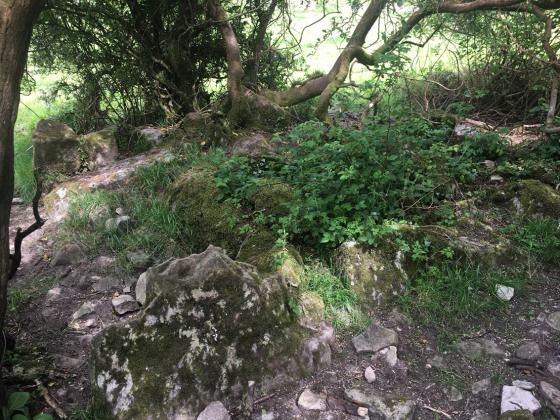This site was a complete surprise and ultimately far more satisfying to visit than the easy to find and well preserved Cloghanmore. Firstly, we weren’t really aware of it except it was listed in Michael Herity’s little book ‘Gleancholmcille – A guide to 5000 years of history in stone’ as one of the stations of the turas – number 9 in fact. His book was first published in 1998 (reprinted 2005) so some things may have changed. We had gone to Glencholmcille on the first full day of our week which happened to be a Sunday. Wandering around in the sunshine, partly to dry off from an early soaking while visiting Cloghanmore we noticed a large number of young people walking from turas to turas. We walked to a few of them out of curiosity as much as anything – gradually soaking in the ancient atmosphere of the place. Turas number 9 was an unremarkable mound of stones with a cross-pillar but no sign of a more ancient monument.
Just as we were about to leave Glencholmcille, my friend drove back to ‘station 9’, then while driving slowly uphill along a narrow road I spotted something in a field that looked like a portal tomb. We left the car and walked back downhill, really just following our feet and came to a narrow gate into a field. Still following our feet we walked uphill to another gate into a stone walled enclosure. Here were two what looked like very fine portal tombs – now for the surprise. Next to this stone walled enclosure was another enclosure with a separate gate – here, completely out of sight to the casual observer, was an unreconstructed court tomb facing towards the two portal tombs. The front court still very much intact. All facing down from their hillside towards the rocky hills surrounding Glencolmcille.
This must have been where it all started in this area, with early Christians following in the footsteps of people far more ancient. I was moved in way that just didn’t happen at Cloghanmore – here, amid all the early Christian cross slabs and history was something far, far older.
The atmosphere at this site was wonderful, it felt as though the day, which had got off to an inauspicious start, had suddenly given us a gift. I really didn’t want to leave.












